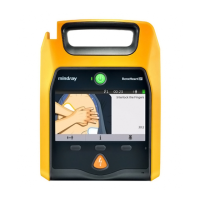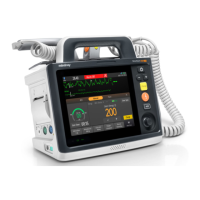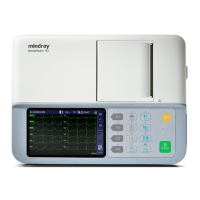A - 9
• Do perform all network functions of data communication within an enclosed network.
A.6.3 Cellular Specifications
System capacity, interference immunity
and network stability
Meets the following requirements:
• The total delay of data transmission from the equipment to the CMS: ≤
10 s.
• The delay for the equipment related settings configured at the CMS to
be effective: ≤ 10 s.
• The data loss percentage of Wi-Fi communication over a 4-hour period: ≤
0.5%.
Test conditions Meets the following conditions simultaneously:
• One equipment supported by a single AP
• Each equipment can communicate with the CMS.
• The weakest strength of the AP signal where the equipment is located is
not less than -65 dBm.
• The distance between the interfering devices and the equipment is
greater than 20 cm. A Wi-Fi interference (no greater than -85 dBm) in the
same channel and a Wi-Fi interference (no greater than -50 dBm) in an
adjacent-channel are presented synchronously. The interfering devices
include, but are not limited to, 2.4 G wireless devices, cellular mobile
networks, interphones, cordless phones, and ESU equipment. The
interfering devices do not include Wi-Fi devices.
Hospital network performance
System capacity, interference immunity
and network stability
Meets the following requirements:
• The total delay of data transmission from the equipment to the CMS ≤ 2s.
• The delay for the equipment related settings configured at the CMS to
be effective: ≤ 2 s.
• The equipment connected to the network roam for 30 times, the data
loss percentage of Wi-Fi communication over a 24-hour period: ≤ 0.1%.
Test conditions Meets the following conditions simultaneously:
• Number of the equipments supported by a single AP: ≤ 3
• Each equipment can communicate with the CMS.
• The weakest strength of the AP signal where the equipment is located is
not less than -65 dBm.
• The distance between the interfering devices and the equipment is
greater than 20 cm. A Wi-Fi interference (no greater than -85 dBm) in the
same channel and a Wi-Fi interference (no greater than -50 dBm) in an
adjacent-channel are presented synchronously. The interfering devices
include, but are not limited to, 2.4 G wireless devices, cellular mobile
networks, microwave ovens, interphones, cordless phones, and ESU
equipment. The interfering devices do not include Wi-Fi devices.
Network type 4G, 5G

